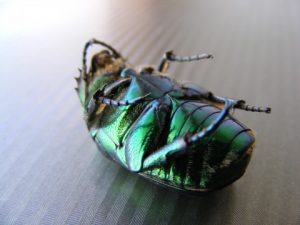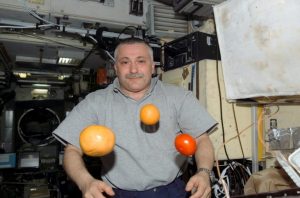A few years ago I was hearing increasing discussion about the idea that much of the microbiology of the built environment was “stamp collecting” and that the indoor microbiome might consist largely of dead or non-viable material passively deposited indoors. Many pweople argued that there was a need for better tools (or increased use of …
Microbes in space have been of interest to the folks at various space agencies for as long as we’ve been sending people into space. Rampant mold growth on the Russian Space Station Mir was probably one of the reasons for the decision to “deorbit” the station (a fancy way of describing crashing into the ocean). …
Just a quick post here, on behalf of Clarisse Betancourt, formerly of the BioBE Center. The new Center for Microbial Systems at the University of Michigan is looking for a lab tech. Summary below. The Center for Microbial Systems Molecular Biology Laboratory offers high throughput automated DNA extraction and Next Generation Sequencing (NGS) using the …
Came across this pretty interesting story today, an article in the Guardian entitled “Bacteria from 300-year-old Ovid poetry volume inspires ‘bio-artist’”. Basically the artist found an old book, and then cultured microbes from it, using her own blood to make blood agar plates. Voila, cool microbe art with history mixed in.
Quick post here. As an aside, it’s amazing how complicated it is to get an IRB waiver just to be able to put out an online survey. But we finally navigated all that and are looking for feedback from anyone who has ever played Gut Check: The Microbiome Game. We’d love to use this feedback …
So this article doesn’t really relate to the built environment but is quite interesting nonetheless. I feel like people often say things like “an asteroid impact would kill all us humans but life would still go on”. The study, “The Resilience of Life to Astrophysical Events” is basically a bunch of math/physics trying to figure …
An interesting confluence of factors has come together in recent years, resulting in an explosion of “science games”. Some of these games use science as a theme, many are educational in nature, and some few even accomplish science through gaming. In my opinion these are the factors that have precipitated this change: Board/card/video games have …
Came across this study today “Airborne Pathogens inside Automobiles for Domestic Use: Assessing In-Car Air Decontamination Devices Using Staphylococcus aureus as the Challenge Bacterium”. What struck me from the start was the Abstract which begins: Family cars represent ∼74% of the yearly global output of motorized vehicles. With a life expectancy of ∼8 decades in …
While not directly related to microbiology, this story about house dust caught my eye. The title of the press release really says it all, “House dust spurs growth of fat cells in lab tests”. Looks like the probable guilty compounds are man-made things like fire retardants but there’s certainly a possibility for microbially produced volatiles …
J. David Miller posted a great summary of the Microbiomes of The Built Environment session at AIHce Expo 2017. Sounds like a fun session.

